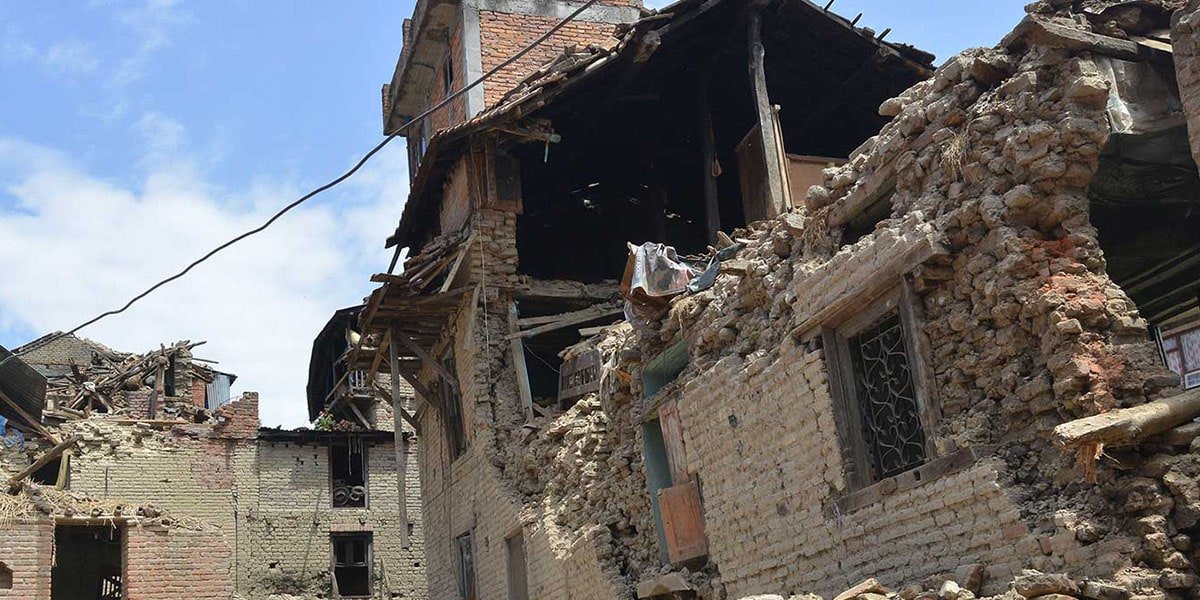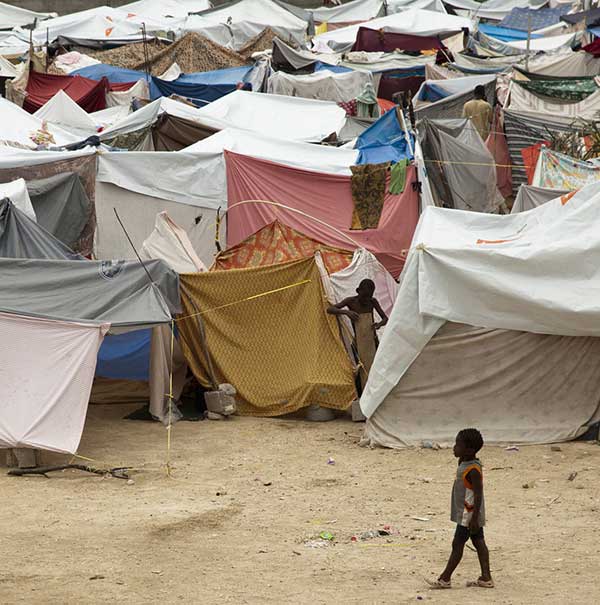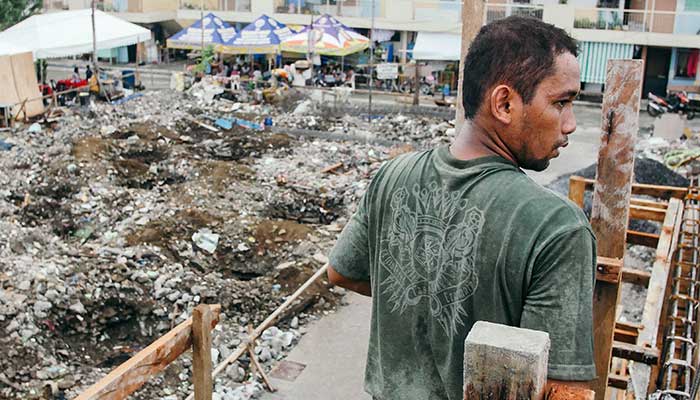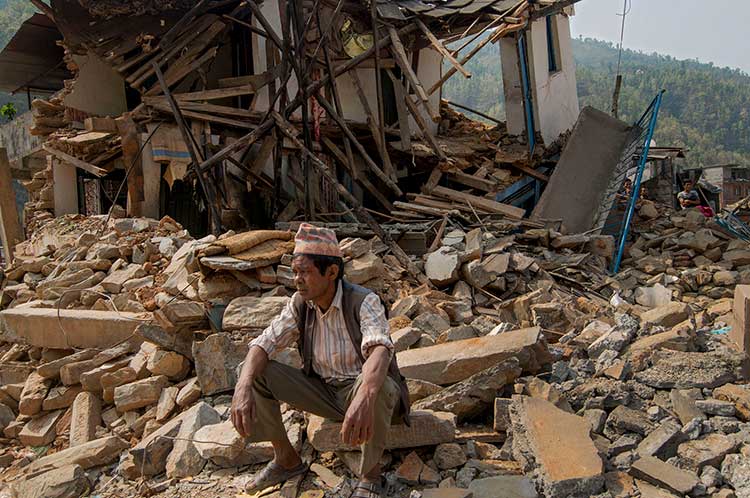

This article on ways to tackle humanitarian crises in cities and urban environments (generally due to armed conflicts and natural disasters) is based on a report published by ALNAP, for the RedR Shelter in Urban Emergencies Training Pilot.
It looks at examples worldwide to determine the best approaches to build effective humanitarian interventions and assistance programmes.
Context is everything (or the importance of localised solutions)
Shelter and settlements are core aspects of response to urban crises. The report highlights the importance of having a thorough understanding of the urban environment and system specific to each humanitarian crisis.
When dealing with shelters and settlements of refugees or displaced populations, donors and organisations must bear in mind the many repercussions of the humanitarian crisis generated, such as:
- Jobs
- Violence against women (known as “GBV prevention” for Gender-Based Violence)
- “WASH”: water, hygiene and sanitation issues
- Disaster relief and preparedness
In this sense, shelters can become a key area of economic recovery as reconstruction stimulates the growth of local jobs.
Preventing flaws in humanitarian aid
 In shelter interventions, many factors make humanitarian assistance more complicated in urban environments, such as:
In shelter interventions, many factors make humanitarian assistance more complicated in urban environments, such as:
- The huge numbers of actors involved (central vs local governments, local vs displaced populations, etc)
- More complex infrastructures and networks, in particular local arrangements for sheltering
- Local land rights and tenure systems (e.g. establishment of slums without possessing any land rights)
- Governance and complex repartition of the communities
Location, location, location
Moving forward, humanitarian aid organisations need to adopt strategies tailored to each crisis’s context, which involve a long term vision around collaboration with communities, integrating local systems and all actors involved in the urban (re-)development.
By integrating communities in the disaster response plan, the outcome is much more accurate and effective in terms of housing, security of tenure as well as economic and social recovery. This means a shift in the scale of intervention, from the household to the neighbourhood, to make it more relevant for entire urban areas.
The key to effective and sustainable humanitarian intervention is a good understanding of the local context, which assessments can provide. However to make these evaluations work properly, new methods and tools may need to be considered to adapt to the particular complexity of urban environments.
Finally, there is a lack of documented lessons and examples of urban shelter and settlements approaches, which has limited the scope of this report. Further documentation is of critical importance in order to move forward with clear guidance and best practice for response to urban crises.
Understanding and defining the urban environment
Trying to define what urban environments are can be very challenging because urbanisation occurs rapidly, especially for medium and small sized cities. It happens in very different ways and in varying degrees of “intensity”.
Instead it may be more helpful to look at the characteristics (and their impact) of an environment to determine its nature: social, geographic, architectural, economic, institutional and demographic.
The power relations taking place within these communities and the influence of different actors within them are aspects that humanitarians must get a deep understanding of in order to intervene effectively.

Rebuilding slums in Manila, Philippines
Urban development: a fragile and chaotic enterprise
As urban areas grow, so do slums – in many areas slums account for up to a third of the urban population. Slums frequently accommodate more vulnerable displaced populations, with no family ties or financial capital with which to seek alternatives.
Slums are often located on land vulnerable to hazards, with insecure tenure. Defining slums can be tricky and they may be more easily understood as a list of characteristics, such as:
- Lack of basic services (running water, electricity, public transport)
- Substandard housing
- Overcrowding
- Insecure land tenure
- Social exclusion
Populations often move between urban and rural areas, as well as within an urban area. Those who arrived most recently, whether displaced or pre-disaster migrants, often have the greatest ties between them.
While it is important for humanitarian organisations to recognise the different types of urban areas, the focus should be on understanding and adapting to the complexity of urban areas, rather than attempting to define and categorise.

Humanitarian assistance & urban development in Nepal ©Ezra Millstein
Recovery and reconstruction
Urban areas make humanitarian assistance more difficult because of their large overall infrastructure, complex land tenure and ownership systems as well as administrative structures. Urban environments rely on a variety of factors and networks.
They are adaptable and flexible, but also more fragile, which has a huge impact on response and recovery to disasters – whether man-made (e.g. armed conflicts) or natural.
Post-disaster strategies and opportunities
Over time, humanitarian organisations have developed a wide range of strategies to help setting up temporary urban shelters and settlements, including
- Material distribution
- Self-help labour
- Voucher systems
- Cash for work
- Rental support
Working with the private sector
Urban areas often provide more opportunities to work with the private sector. Partnering with private sector organisations can improve the speed and scale of the response, the cost effectiveness, access to technology and technical know-how.
Humanitarian experts should also be aware of the drivers for private sector actors, and consider the potential benefits and risks of these partnerships. For example, private sector actors may wish to engage in disaster response to get access to new markets, gain policy-making influence, to improve their image and to give back to the community.
Successful recovery and reconstruction is often dependent on decisions made early in a response, making it important to consider long-term and permanent solutions as early as possible. Without a pre-established process for families affected by humanitarian crises to return to safe and permanent homes, emergency shelter could end up as permanent slums.
Shelter at the centre…
Shelter is an important aspect of economic recovery; safe and decent housing boosts the recovery of most other sectors as it stimulates the economy and regenerates the local job market. Shelter should be at the centre of humanitarian interventions in cities.
Post-disaster shelter recovery is also an opportunity to reduce risks and vulnerability, reinforce security of tenure and to better include vulnerable people such as renters, squatters, and women in housing programmes.
… alongside communities
Communities should be at the centre of recovery policies from the beginning, in order to help determine priorities and identify solutions that address community and cultural needs.
The community can be involved through ‘community contracting’, whereby funds are placed in the hands of the participating and engaged community, who develop skills that can later be used to generate income.
In urban areas, it is more effective to work neighbourhood by neighbourhood due to the high density and diversity of neighbourhoods in a city. Urban recovery programming requires a solid context analysis, which includes an understanding of the economy (including cash and markets), its complexity, diversity, informality and fluidity.
Humanitarian aid organisations should optimise opportunities for communication, participation and inclusive urban governance by establishing a systemic and strategic approach.
This project is funded by the EU.





Comments